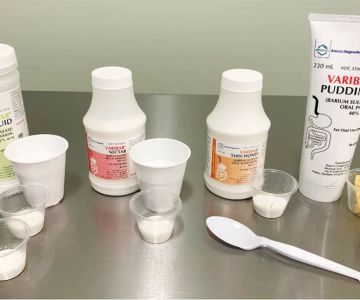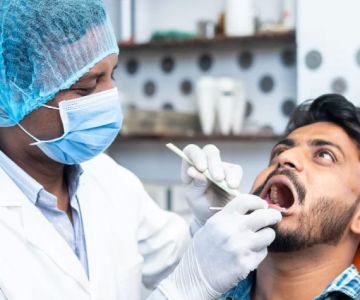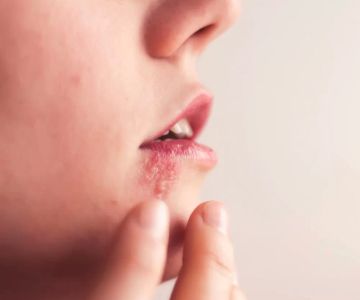How Far Apart Should I Check with an Oral Thermometer?
Taking an accurate body temperature is essential for monitoring your health, and using an oral thermometer is one of the most common and reliable methods for doing so. Whether you're concerned about a fever, trying to monitor your child’s health, or just checking in on your own well-being, knowing how and when to check your temperature properly can make all the difference. In this article, we'll discuss how far apart you should check with an oral thermometer, best practices for temperature measurement, and some tips for using oral thermometers effectively.
1. The Basics of Using an Oral Thermometer
Before discussing the frequency of taking temperature readings, it's important to understand how to properly use an oral thermometer. Oral thermometers are designed to measure your body temperature by placing the thermometer under your tongue. For the most accurate reading, ensure that the thermometer is placed in the center of the mouth, under the tongue, and close to the back of the throat.
When using an oral thermometer, it's essential to keep your mouth closed during the reading. This prevents air from cooling the thermometer and affecting the accuracy of the measurement. Most digital thermometers will beep when the reading is complete, usually after about 30 seconds to a minute, depending on the model.
2. How Far Apart Should You Check with an Oral Thermometer?
The general recommendation for checking your temperature with an oral thermometer is to wait at least 10-15 minutes between readings. This time allows your body temperature to stabilize, so you can get a more accurate reading each time. Taking a measurement too soon after the previous one can result in incorrect data because your body may not have fully adjusted to the new temperature measurement.
For example, if you’re trying to monitor your temperature after taking medicine for a fever, checking it immediately after taking the medication might give you an artificially lower reading. Waiting 15 minutes after taking the medicine allows your body temperature to return to a more accurate baseline.
3. Factors That Affect Temperature Readings
Several factors can influence the accuracy of an oral thermometer reading, including:
- Recent activity: Physical activity, eating, drinking, or smoking can all raise or lower your body temperature temporarily. It's a good idea to wait at least 15 minutes after these activities before measuring your temperature to avoid inaccurate readings.
- Environmental conditions: If you’ve been in a cold or hot environment, your body temperature may not be at its usual state. Again, waiting a few minutes will help stabilize your temperature for a more accurate reading.
- Age: Infants and young children may have slightly different temperature ranges, and they may require more frequent monitoring. The 10-15 minute wait is still recommended, but more caution may be needed if they are showing signs of illness.
4. How to Use an Oral Thermometer Correctly
Using an oral thermometer is straightforward, but it’s important to follow the steps to ensure an accurate reading. Here’s a quick guide:
- Clean the thermometer: Before and after use, ensure the thermometer is thoroughly cleaned. This helps prevent contamination and ensures the device is ready for the next use.
- Position the thermometer correctly: Place the thermometer under the tongue, as far back as comfortable, while keeping the mouth closed. Avoid talking or opening your mouth during the reading.
- Wait for the beep: Most digital thermometers will beep once they have completed the measurement. Follow the manufacturer’s instructions for how long to wait for the beep.
- Read the temperature: Once the thermometer beeps, remove it and read the temperature displayed on the screen. Note down the temperature for future reference, especially if monitoring for fever.
- Clean after use: After using the thermometer, wipe it clean with rubbing alcohol or mild soap and water. Store it in a safe, dry place for the next use.
5. Tips for Monitoring Temperature Accurately
When you’re trying to keep an eye on your body temperature, it’s important to follow some best practices to ensure accuracy. Here are a few tips:
- Check at the same time each day: Consistency is key when monitoring your temperature. Try to take your temperature at the same time each day for a reliable comparison.
- Avoid distractions: Ensure you’re calm and at rest when taking your temperature. Avoid talking, moving, or engaging in any physical activity that could affect your body temperature.
- Use a high-quality thermometer: Invest in a reliable, digital thermometer to ensure accuracy. Older mercury thermometers can be difficult to read and may not be as precise.
- Track trends: If you’re monitoring a fever or other symptoms, track your temperature readings over time to identify any trends that may need to be addressed with a healthcare professional.
6. When to Seek Medical Advice
If you’re using an oral thermometer to monitor your temperature and notice significant changes, it’s important to seek medical advice. A temperature above 100.4°F (38°C) is generally considered a fever and may be a sign of an infection or other illness. If your fever persists for more than a few days, or if you experience other concerning symptoms like severe headache, difficulty breathing, or confusion, contact your healthcare provider immediately.
For children, especially infants, a high fever can be particularly dangerous, and you should consult with a pediatrician if your child’s temperature exceeds 100.4°F (38°C). Early intervention can help prevent complications.
7. How Dentistry Toothtruth Can Help
At Dentistry Toothtruth, we understand that maintaining overall health includes keeping track of things like body temperature. While we specialize in oral health, we recognize that your general well-being is important too. If you’re concerned about oral health while dealing with illness or fever, our team is here to offer guidance and support. Maintaining a healthy mouth, especially when dealing with a fever, is essential to your overall health.
For more information on maintaining your oral health or other health-related questions, visit Dentistry Toothtruth for professional advice and services.
SEO Title: How Far Apart Should I Check with an Oral Thermometer? Tips for Accurate Temperature MonitoringSEO Keywords: oral thermometer, how to check temperature, body temperature monitoring, fever monitoring, temperature checking tipsSEO Description: Learn the best practices for using an oral thermometer and how far apart to check your temperature for accuracy. Keep track of your health and fever with our expert tips.






 Shawnee Christian Healthcare - Dental4.0 (361 review)
Shawnee Christian Healthcare - Dental4.0 (361 review) Valleywise Community Health Center - Mesa3.0 (252 review)
Valleywise Community Health Center - Mesa3.0 (252 review) Community Dental of Burlington4.0 (281 review)
Community Dental of Burlington4.0 (281 review) Heritage Grove Family Dental - Plainfield Dental Clinic4.0 (1397 review)
Heritage Grove Family Dental - Plainfield Dental Clinic4.0 (1397 review) Central Dental - Dentist Westchester NY4.0 (63 review)
Central Dental - Dentist Westchester NY4.0 (63 review) MapleTree Pediatric Dentistry4.0 (102 review)
MapleTree Pediatric Dentistry4.0 (102 review) The Importance of Oral Health Education During Pregnancy for a Healthy Pregnancy
The Importance of Oral Health Education During Pregnancy for a Healthy Pregnancy Best Tips for Brushing Your Teeth Properly for Healthy Gums: Essential Techniques for Oral Health
Best Tips for Brushing Your Teeth Properly for Healthy Gums: Essential Techniques for Oral Health Why Skipping Dental Checkups Can Lead to Bigger Oral Health Problems
Why Skipping Dental Checkups Can Lead to Bigger Oral Health Problems Advantages of Porcelain Dental Restorations
Advantages of Porcelain Dental Restorations How Can Diabetes Cause Tooth and Gum Problems? Preventing and Managing Oral Health Issues
How Can Diabetes Cause Tooth and Gum Problems? Preventing and Managing Oral Health Issues Healthy Habits for Promoting Good Oral Health and Hygiene: Tips for a Healthy Smile
Healthy Habits for Promoting Good Oral Health and Hygiene: Tips for a Healthy Smile